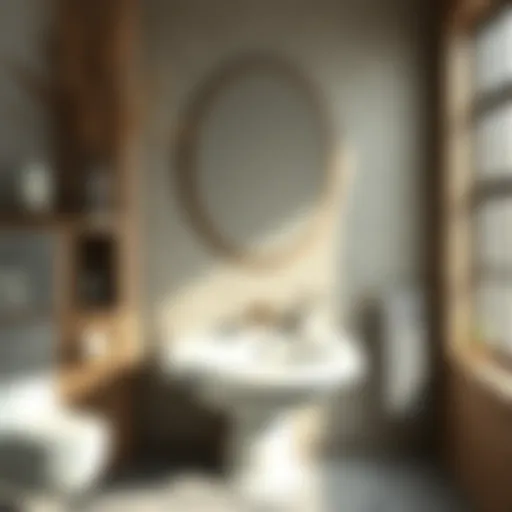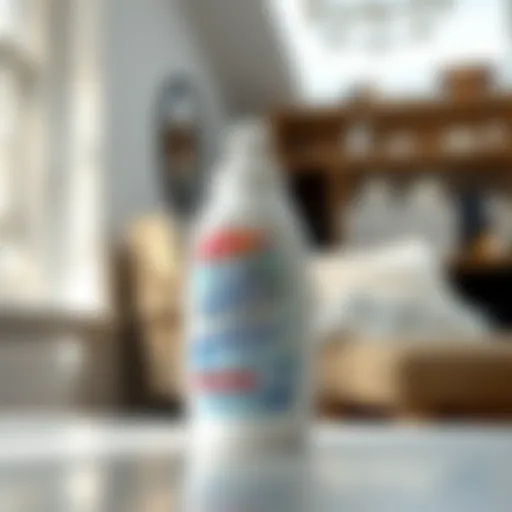Enhancing Your Bathroom with a Vent Fan Guide
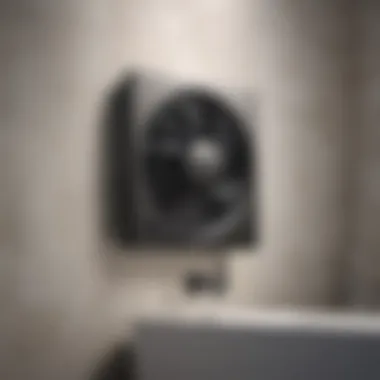

Intro
Bathroom ventilation can sometimes be an afterthought when designing a home. Yet, a proper vent fan does wonders not just for air quality, but also for overall comfort. Imagine stepping out of a hot shower only to be greeted by a cloud of humidity; not a pleasant scene! Installing a vent fan helps whisk away steam, minimizes odors, and even keeps mold at bay. Understanding the various styles and aesthetics associated with bathroom ventilation can elevate your space, making functionality blend seamlessly with design.
Trending Styles
When considering a vent fan, it’s important to tie it into the overall design of the bathroom. A vent fan can either be a functional necessity or a design statement. Let's look deeper into two notable styles: Modern Minimalism and Cozy Rustic.
Modern Minimalism
Modern minimalism favors clean lines and uncluttered spaces. Choose vent fans with simple designs—possibly with a matte finish that complements lighter walls. The idea is blending the fan into the architecture rather than making it a standalone feature. Consider a sleek, square design with a low-profile look. Popular options are the Panasonic WhisperCeiling or the Broan-NuTone design. These fans not only function well but also maintain the seamless aesthetic typical in modern bathrooms.
Cozy Rustic
On the flip side, a cozy rustic style calls for warmth and charm. Think wooden accents, terracotta colors, and vintage fixtures. Here, vent fans can incorporate textured materials or even a faux-wood finish to stay true to the theme. Select a fan that boasts a more rugged design, potentially with a grid or mesh cover. Utilizing products like the Delta Breez SLM or the Hunter Home Comfort model marries function with rustic character.
Color Palettes
Choosing the right color palette can be just as important as selecting the right fan itself. The colors in your bathroom can evoke specific feelings and impacts how one perceives space.
Calming Neutrals
Neutrals like beige, taupe, and soft whites foster tranquility. Pairing your vent fan with calming colors can make it feel harmonious within the environment. This choice not only is visually appealing but also promotes a relaxed atmosphere—ideal for unwinding after a long day.
Bold Accents
Alternatively, bold accents like emerald greens or rich navy can provide a dramatic flair. If your vent fan stands out against a bright backdrop, it may become a talking point in your design. A classic option here is to select a fan in contrasting colors—like a black fan against white tiles; it draws the eye without overwhelming the space.
A well-chosen vent fan can significantly influence the air quality and aesthetic of your bathroom.
Closure
Understanding the Importance of Ventilation
Ventilation in a bathroom is not just a fancy addition; it's a fundamental aspect of maintaining a healthy and pleasant environment. When you think about it, a bathroom is a space that deals with moisture, heat, and odors on a daily basis. Proper ventilation is essential to tackle these issues head-on. With a vent fan integrated into your design, you're not merely improving air circulation, but also functioning as a stalwart defender against various complications.
The primary role of ventilation is to create a balance between the fresh air coming in and exhaust air going out. This exchange is vital, especially in areas that experience high humidity levels. Without adequate airflow, humidity can linger in the air, leading to unpleasant smells and a dank atmosphere.
The Role of Ventilation in a Bathroom
When it comes to vent fans, their role can be boiled down to a few core functions. Firstly, they help in removing moisture. Every time you take a hot shower or bath, a significant amount of steam is generated. If this moisture isn't extracted, it invites problems such as mold growth and structural damage to the bathroom. In more practical terms, this means that the lifespan of your fixtures, paint, and even the overall structure can be compromised.
Secondly, vent fans assist in eliminating odors. Bathrooms can harbor a myriad of smells, from what’s left behind after a visit to the loo to the lingering scent of makeup and bath products. A good ventilation system helps to refresh the air effectively, making it a more welcoming space.
Moreover, proper ventilation also plays a role in temperature regulation. On those chilly winter mornings, who wouldn’t want to step into a warm bathroom instead of an icy one? By equipping your space with a functional vent fan, you can manage the air temperature effectively, allowing for a more comfortable transition from your shower.
Consequences of Poor Ventilation
Now, let's delve into what happens when you neglect proper ventilation. The consequences can be notably severe. From a health perspective, poor air quality can lead to respiratory issues. This isn’t mere speculation – studies have linked mold exposure to various health problems, including asthma and allergies.
On an aesthetic note, insufficient ventilation can lead to visible signs of dampness such as peeling paint and warped wood, damaging your bathroom's look and ultimately reducing its value.
Furthermore, when moisture hangs around, it creates an ideal breeding ground for mold and mildew. The battle against these issues can turn into an expensive endeavor. Instead of just investing in a stylish design, you’ll soon find yourself shelling out for mold remediation services.
Exploring Different Types of Vent Fans
When it comes to selecting a vent fan for your bathroom, understanding the available types is crucial. Each type comes with its own benefits and considerations, impacting your overall bathroom design as well as air quality. With the right choice, you can effectively manage moisture and odors, ensuring a fresher space. Let’s take a closer look at the most common vent fans available.
Ceiling-Mounted Vent Fans
Ceiling-mounted vent fans are probably the most recognized option in bathrooms around the world. They’re typically installed directly onto the ceiling, making them an unobtrusive addition to your decor. The main advantage here is that their location allows them to pull moisture and steam from different angles. You can find models with built-in heating functions, which can be quite convenient during the chilly months.
However, one should consider ceiling height before installation. If you’ve got a low ceiling, a ceiling fan could hang too low and affect the aesthetics of your bathroom. Always check if it balances function with style.
Wall-Mounted Vent Fans
Wall-mounted vent fans offer versatility and aesthetic options that can cater to various room layouts. Instead of being fixed to the ceiling, these fans are mounted on the wall, which can be practical in situations where ceiling space is limited or finding a spot for ducting proves tricky.
Such fans often come in stylish designs that can blend into your wall coverings, becoming a part of your decor rather than an afterthought. However, keep in mind, they might be less effective than ceiling-mounted options in drawing out steam, simply because they aren’t positioned where humid air naturally rises.
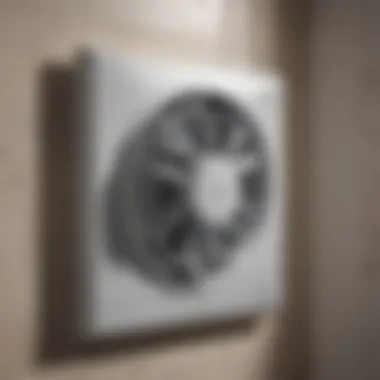

Inline Vent Fans
Overview of Inline Fans
Inline vent fans are installed away from the bathroom, typically situated in an attic or remote space. This arrangement allows them to effectively ventilate multiple rooms at once if set up correctly. Their most notable feature is the quiet operation since the fan motor itself is located away from the living area.
In terms of energy efficiency, they often outperform traditional options. They maximize airflow without the disruptive sounds that can arise from the typical bathroom fan setup. This can add a layer of comfort, allowing your bathroom space to maintain tranquility.
Benefits of Using Inline Fans
One of the key advantages of inline fans lies in their powerful airflow capabilities. They can handle complicated duct runs more efficiently, moving air without significant drops in pressure. This means your bathroom will experience superior ventilation, reducing that damp feeling often associated with wet areas.
They’re also highly customizable, allowing for flexible setups. Inline fans can even serve multiple bathrooms, making them a popular choice for larger homes or for families looking to maintain consistent air quality across various spaces. However, you should be aware that installation complexity might require a bit of professional help.
Combination Fans with Lights
Combination fans take convenience to the next level by integrating lighting into their design. This two-in-one approach not only saves you from adding extra fixtures but also maximizes usability in smaller spaces. The downside? You may need to replace the entire unit if the light bulb burns out, rather than replacing just the light fixture. It's a trade-off between practical use and potential inconvenience.
By understanding the various types of vent fans, you equip yourself to make a wiser choice that considers both function and style in your bathroom design. With careful consideration and proper installation, you can create an environment that is both inviting and healthy.
Preparing for Installation
When it comes to putting a vent fan in your bathroom, getting the preparation right is half the battle won. This stage is where you map out a plan that will set the tone for a smooth installation process. Think of it as laying the groundwork before you start building a house. Rushing through this phase can lead to mistakes down the line, making it all the more crucial to take your time.
Assessing Your Bathroom Size and Layout
Understanding your bathroom's size and layout is like knowing the terrain before setting foot on it. A small, cramped space might limit your options for fan placement, while a larger bathroom can offer a variety of choices. You’ll want to measure the dimensions carefully and take detailed notes.
Why is this important?
- Fan Size: The amount of air that needs to move through the room changes based on size. A fan that’s too small won’t do the job, while one that’s too large can be unnecessarily noisy.
- Duct Space: Depending on where you plan to run the ductwork, the layout will guide your decisions effectively.
- Placement Options: Knowing your space allows you to strategically select whether it goes on the ceiling or the wall, maximizing efficiency.
Choosing the Right Fan Size and Power
Now that you’ve assessed the dimensions of your bathroom, it’s time to get down to specifics regarding the fan itself. Not all fans are created equal, and understanding the nuances of size and power can greatly impact your ventilation success.
Key considerations:
- CFM Rating: This stands for cubic feet per minute, and it’s crucial. A common rule of thumb is that you need 1 CFM for every square foot of bathroom space. So, if you have a 50 square foot bathroom, look for a fan with at least a 50 CFM rating.
- Noise Levels: If you don’t want your vent fan sounding like a jet engine, look for fans rated around 1.0 Sones or lower. That indicates a quieter operation.
- Style and Efficiency: It’s beneficial to pick models that boast an energy-efficient design; after all, ventilation shouldn’t bust your utility bill.
Gathering Necessary Tools and Materials
Having the right tools on hand is crucial to ensure everything runs smoothly during installation. You wouldn’t want to be halfway through just to realize you’re missing a screwdriver. Here’s a breakdown of what you’ll likely need:
- Basic Tools: A drill, screwdrivers, level, utility knife, and measuring tape. These are the workhorses of any installation job.
- Safety Gear: Always have goggles and gloves on deck. After all, better safe than sorry.
- Materials: Depending on your setup, you may require ducting materials, vent covers, and electrical wire. Make a checklist beforehand to avoid running back and forth.
"Preparation is the key to success. Without it, even the simplest tasks can turn into a monumental headache."
In summary, preparing for installation isn't just a box to tick on your list. It directly impacts how well your vent fan will function in the long run. Each step, from understanding your bathroom's dimensions to gathering all the necessary tools, is vital. Approach this with diligence and forethought, and you're setting yourself up for a successful installation.
Step-by-Step Installation Process
The installation of a vent fan in your bathroom is more than just a task; it’s a pivotal step toward improving air circulation, managing humidity, and enhancing the overall comfort of your space. An effective installation process ensures that the fan operates efficiently, effectively combating issues like mold growth and odors. Knowing how to go about it can save you time, money, and potential headaches in the long run. Let’s break it down into manageable steps.
Turning Off Power and Preparing the Area
Before diving into any electrical project, safety should always be the number one priority. Turning off the power at your breaker box isn’t just a good idea; it’s an absolute necessity. Check if the power is off by using a non-contact voltage tester.
Once you’ve ensured that there’s no electricity flowing, it’s time to prepare your workspace. Clear the area around the installation site from clutter. Lay down a drop cloth to catch any debris or dust that might fall during the process. This will help keep your bathroom tidy and reduce the cleanup job later.
Making Openings for Ducting
Creating openings for ducting is where it gets a bit technical, so pay attention. First, identify where the ductwork will lead outside. You’ll need to cut a hole in the wall or ceiling. A jigsaw makes this task much easier. Use a stud finder to avoid cutting into any electrical wires or plumbing, as this could lead to costly repairs.
Ensure the opening is slightly larger than the duct itself to facilitate installation. A tight fit can result in air leaks, which defeats the purpose of having the vent fan in the first place. Proper alignment will facilitate a sleek finish and improve the efficiency of airflow.
Mounting the Vent Fan
With the openings set, it’s time to mount the vent fan. Follow the manufacturer’s instructions, as each model may have slightly different requirements. Generally, you will position the fan at the opening and secure it with screws. Most fans come with mounting brackets that simplify this task.
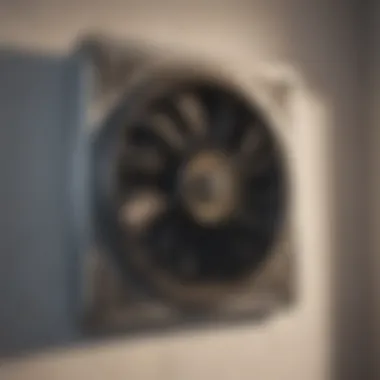

It’s essential that the fan is level for proper functioning. Use a level tool to check this. If the fan isn’t level, it might operate inefficiently, failing to exhaust moisture and odors effectively.
Connecting Ductwork and Vent Cover
Next up is connecting the ductwork. Use duct tape or clamps to seal the connections between the vent fan and the duct. This is critical to prevent air leaks, which can reduce the system’s efficacy.
Once the ductwork is connected, you can cover it with the vent cover. Make sure it sits flush against the ceiling or wall and is sealed securely. This not only looks better but also prevents moisture from seeping back into the space.
Wiring the Fan
This step can be tricky if you’re not familiar with electrical work. I recommend seeking help from an electrician if you have any doubts.
For those comfortable with wiring, connect the fan’s wires to the house wiring according to the electrical codes. Typically, you will be connecting the black (live) wire, white (neutral), and the green or copper (ground) wire. Once connected, gently push the wires back into the junction box and secure the fan cover.
Testing the Installation
Before patting yourself on the back, it’s testing time. Turn the power back on at the breaker and switch on the vent fan. Listen for a steady hum that indicates it’s working. Check for any unusual sounds, as these could indicate improper installation.
Observe the airflow both from the vent and where it exits. If it’s not quite whooshing like it should, you may need to recheck seals and connections. Make adjustments as necessary.
Remember, a well-installed vent fan does more than just look good; it plays a crucial role in maintaining a healthy bathroom environment.
Maintaining Your Vent Fan
Proper maintenance of your vent fan is crucial for multiple reasons. Such a device acts as the unsung hero in your bathroom, constantly working to control humidity levels and circulate air. If neglected, however, performance can diminish, leading to increased energy costs and poor air quality. Engaging in a regular maintenance routine ensures the fan operates efficiently, maximizing its lifespan and keeping your bathroom comfortable year-round. Think of it like regularly tuning a musical instrument; failure to do so could lead to discord in your home environment.
Regular Cleaning Procedures
Cleaning your vent fan should be a regular part of your household chores. Dust, lint, and moisture can accumulate on the fan blades and housing, ultimately clogging the mechanism. This can hinder performance and make a fan run louder or even lead to a complete failure of the unit. The cleaning is straightforward and can be done in just a few simple steps:
- Turn Off Power: Always ensure the power is switched off at the circuit breaker before starting any cleaning tasks. Safety first, right?
- Remove the Grill: Most fans have a grill or cover that can be easily taken off. This might just involve a few screws or clips.
- Wipe Down Blades and Housing: Get a microfiber cloth and gently wipe the blades and housing. Make sure you get into all the nooks and crannies. A gentle cleaner can also be used, but ensure it's safe for the material of your fan.
- Clean the Grill: Don’t forget the grill! Rinse it in soapy water, then let it dry completely before replacing it.
- Replace Everything: Once everything is clean and dry, reattach the grill securely.
"Regular cleaning can prolong the life of your vent fan and help maintain optimal air quality in your home."
Troubleshooting Common Issues
Issues with your vent fan can happen, but understanding how to troubleshoot some common problems may save you both time and money. Here’s a short list of problems and what to look for:
- Fan Doesn’t Start: Check if power is reaching the fan. You can use a multimeter for this. Sometimes resetting a tripped breaker will do the trick.
- Unusual Noises: If your fan sounds like it's auditioning for a horror movie, you might be dealing with loose components or dirt build-up. Make sure to clean it as mentioned above. If noise persists, check for any items blocking the blades.
- Weak Airflow: This can be frustrating, as airflow is the reason for the fan's existence. Often, poor airflow is due to duct issues or an obstructed vent. Ensure that vents are open and that ducts are clear of any debris.
- Odors: If you notice a musty smell, that might indicate mold growth inside the fan or ducting. Complete cleaning might be necessary, and don't hesitate to consult a professional if the problem seems beyond a simple fix.
Enhancing Energy Efficiency
From selecting the right fan model to understanding how they operate, every detail plays a significant role in keeping energy consumption to a minimum and ensuring you reap the benefits for years to come.
Choosing Energy-Efficient Models
When looking for a vent fan, opting for energy-efficient models should be high on your list. Here are a few key features to look out for:
- Energy Star Rating: Fans with an Energy Star label are designed to use less electricity, making them ideal for an environment-focused installation.
- Low Sones Rating: This measurement defines the noise level. Quieter fans often use advanced technology which can lead to better energy efficiency.
- DC Motor: Fans with a direct current (DC) motor tends to consume less electricity compared to standard AC motors.
The selection of such models not only benefits your utility expenses but also contributes to a quieter, more peaceful bathroom experience. A well-chosen energy-efficient fan can easily outlast traditional fans, saving you money in replacement costs as well.
Understanding Fan Ratings
Fan ratings are essential information that helps consumers make informed choices. Here are two primary metrics you should know about:
- CFM (Cubic Feet per Minute): This measurement tells you how much air a fan can move. Higher CFM ratings indicate more efficient air exchanges, crucial for maintaining indoor air quality.
- Sones: This rate measures how loud a fan operates. It’s beneficial to look for fans with low sones, as they often signify quieter operation without compromising performance.
Knowing these ratings aids in selecting a fan that not only meets your performance needs but also aligns with your energy-saving goals. If a fan can effectively ventilate your bathroom while running quietly and consuming less power, you have struck a winning chord.
"Energy efficiency isn't a fantasy; it’s a smart choice that impacts your comfort and your wallet, especially in commonly-used spaces like bathrooms."
When considering the integration of a vent fan, be sure to do research, read consumer reviews on various models, and compare specs to ensure you're getting the best fit for both your bathroom and your budget. A well-informed choice today can lead to significant benefits down the road.
The Impact on Air Quality
In the context of bathroom design, the significance of air quality cannot be overstated. When integrating a vent fan, understanding its impact on air quality becomes crucial. Bathrooms are often susceptible to moisture, which can lead to various issues including mold growth and unpleasant odors. By effectively managing airflow, vent fans play a pivotal role in mitigating these problems. A well-ventilated bathroom not only feels fresher but also promotes a healthier living space. This section will delve into how vent fans enhance indoor air quality, linking it closely with humidity control and overall health.
How Vent Fans Improve Indoor Air Quality
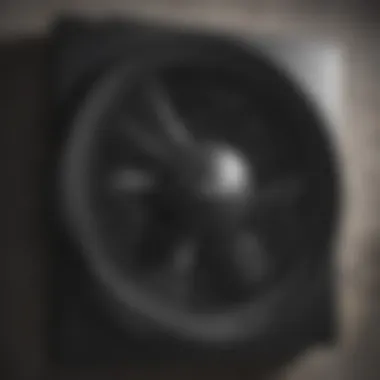

Vent fans actively remove stale air and excess moisture, which is significant in a room that regularly experiences showers and baths. This is pivotal because stagnant air can harbor pollutants, allergens, and various microscopic irritants that can affect your respiratory health. When considering ventilation methods, it's particularly notable how vent fans help balance indoor air. Rather than being trapped within the confines of the space, humid air is expelled, thereby allowing cleaner, drier air to enter.
- Improves Circulation: Fresh air circulation dilutes indoor contaminants, creating a more pleasant environment.
- Prevents Mold and Mildew: Regularly removing wet air is key to reducing instances of mold growth. Mold can pose serious health risks, especially for those with allergies or respiratory issues.
- Minimizes Odors: A properly functioning vent fan can help clear unwanted smells, enhancing your bathroom experience and making it somewhere you want to be.
Most noteworthy, many homeowners don’t realize that using a vent fan during and after a shower can effectively funnel out significant amounts of humidity. For maximum benefit, it’s advisable to keep the fan running for at least 20 minutes post-shower. This small effort pays off by maintaining a more comfortable and healthier space.
"Indoor air pollution can be worse than outdoor pollution; hence, improving air quality is not a luxury but a necessity."
Link Between Humidity Control and Health
The correlation between humidity levels and health issues is well-documented. Excessive humidity can create a breeding ground for various types of bacteria and mold. High humidity levels often lead to issues such as asthma or hay fever aggravation, making the role of a vent fan even more critical.
- Health Impacts of Humidity:
- Elevated humidity can trigger allergic reactions.
- It may contribute to the development of respiratory issues.
- Extended exposure can impact sleep quality and overall comfort.
By keeping humidity levels in check, vent fans play an essential role in preventing the onset of these health-related issues. Regular use can contribute to a more stable indoor climate, which ultimately supports better health outcomes.
Inassessable musty odors and sticky air may seem minor inconveniences, but they can often hide deeper health concerns. Effective humidity control requires diligence, and integrating a vent fan is a straightforward yet impactful step in creating a healthier bathroom environment.
Personalizing Your Bathroom Experience
Personalizing your bathroom isn’t just about slapping on some paint or adding a fancy shower curtain. It’s about creating an environment that resonates with your personal taste and fits your everyday needs. When integrating a vent fan, this personalization takes on another layer, combining functionality with style. Think about how each choice you make—not only enhances air circulation—also speaks to who you are. The right vent fan could be the unsung hero of your bathroom design, blending aesthetically while carrying out its vital job.
Design Considerations When Installing Vent Fans
Color and Style Coordination
In the world of interior design, color and style say a lot about a person’s personality. Coordinating your vent fan’s color and style with your bathroom’s theme not only keeps a cohesive look but also adds a touch of sophistication. For instance, sleek white or chrome finish fans can complement a modern bathroom, while vintage-styled fans might fit perfectly in a traditional setting. The key characteristic here is unity; everything should flow seamlessly, giving the space a polished finish.
- Why It Matters: A well-coordinated vent fan can elevate the overall aesthetic of the bathroom.
- Unique Features: Many manufacturers offer customizable options, allowing you to select colors that match existing elements like tiles or cabinets.
However, one must consider potential drawbacks. If the fan becomes too much of a focal point, it could draw attention away from other decorative aspects. Thus, the choice should align with what’s most important in your design.
Placement for Aesthetic Appeal
Placement is another critical consideration. A vent fan often goes unnoticed, especially if installed in an optimal position. Choosing its location thoughtfully can keep it functional without compromising visual appeal. For example, positioning it just near the shower can facilitate airflow where you need it most—often right above areas with steam.
- Key Characteristic: The aesthetic advantage lies in hiding unsightly ducts and fittings behind attractive ceiling designs or within false ceilings.
- Unique Features: Some vents can double as a decorative light fixture, killing two birds with one stone.
The biggest advantage of a strategic fan placement is that it can enhance the airflow without disrupting the bathroom’s serene environment. Mind you, misplacing the fan can have the opposite effect, resulting in noise or inadequate ventilation, thereby diminishing your efforts at personalization.
Creating a Multi-Functional Space
A bathroom these days isn’t just a place for basic hygiene; it can be a sanctuary. By integrating a vent fan into your design, you’re able to create a multi-functional space that’s as much about comfort as it is about utility.
Consider incorporating features like heated ventilation or fans with adjustable speed settings. These are game-changers, allowing the space to transition between a simple washroom to a cozy retreat. Imagine coming in from a chilly morning and stepping into a warm, well-ventilated space ready to go about your business without rushing through the process.
- Why it's essential: The multi-functional approach maximizes your space, making your bathroom a flexible environment.
- Unique Features: Many modern fans come equiped with features designed for additional functions, such as humidity sensors that automatically adjust the ventilation.
In sum, as you’re planning the addition of a vent fan, remember that it should align with your personal style and functional needs. Each choice—whether regarding color, placement, or how you intend to utilize the space—forms part of a larger narrative about who you are and how you experience your home.
Future Trends in Bathroom Ventilation
As the world evolves, so does our approach to creating healthier and more efficient living spaces. Bathroom ventilation, often overlooked, is receiving its fair share of innovative advancements. This section delves into emerging trends that are set to reshape bathroom experiences, focusing on smart solutions and their integration with home systems.
Smart Ventilation Solutions
The rise of smart technology has been revolutionary in numerous fields, and bathroom ventilation is no exception. Smart vent solutions not only boost air quality but also enhance convenience and efficiency. Imagine a vent fan that automatically adjusts its speed based on humidity levels. Such systems come equipped with sensors that detect moisture and activate the fan only when necessary.
Benefits of Smart Ventilation Solutions:
- Improved Efficiency: By operating only when needed, these fans consume less energy, translating to lower utility bills.
- Enhanced Air Quality: They maintain optimal indoor conditions, reducing the likelihood of mold growth and unpleasant odors.
- User Control: Many models allow homeowners to monitor and adjust settings via smartphone apps, leading to greater user convenience.
Integrating with Home Automation Systems
Home automation is changing how we manage our living spaces. Integrating bathroom vent fans with an overall home automation system brings a host of advantages. This seamless connection allows users to control not just the fans but also other elements of their homes from one central system.
When ventilation systems are incorporated into home automation, it enriches personal comfort. For instance, setting a routine where the fan turns on during the shower and off afterward frees the homeowner from manual adjustments. This regularity not only keeps the air quality in check but also fosters a more serene atmosphere.
Key Considerations for Integration:
- Compatibility: Ensure your vent fan is compatible with your home automation system, be it Google Home, Amazon Alexa, or any other features.
- Selection of Features: Many modern fans offer remote control and voice activation, making day-to-day life simpler.
- Cost-Effectiveness: While the initial investment may be higher, the long-term benefits often outweigh the costs due to energy savings and increased property value.
"Investing in smart ventilation and home automation today can significantly enhance both comfort and resale value tomorrow."









